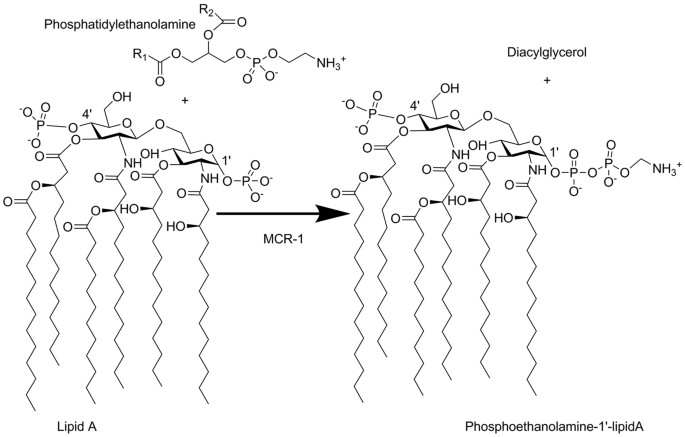
Authors (21): P. Hinchliffe, Q. E. Yang, E. Portal, T. Young, H. Li, C. L. Tooke, M. J. Carvalho, N. G. Paterson, J. üR. Brem, P. R. Niumsup, U. Tansawai, L. Lei, M. Li, Z. Shen, Y. Wang, C. J. Schofield, A. J. Mulholland, J. Shen, N. Fey, T. R. Walsh, J. Spencer
Themes: Biocatalysis DOI: 10.1038/srep39392
Citations: 121
Pub type: article-journal
Pub year: 2017
Publisher: Springer Science and Business Media LLC
Issue: 1
License: https://creativecommons.org/licenses/by/4.0
Publication date(s): 2017/04 (print) 2017/01/06 (online)
Pages:
Volume: 7 Issue: 1
Journal: Scientific Reports
Link: http://www.nature.com/articles/srep39392.pdf
URL: http://dx.doi.org/10.1038/srep39392The polymixin colistin is a “last line” antibiotic against extensively-resistant Gram-negative bacteria. Recently, the mcr-1 gene was identified as a plasmid-mediated resistance mechanism in human and animal Enterobacteriaceae, with a wide geographical distribution and many producer strains resistant to multiple other antibiotics. mcr-1 encodes a membrane-bound enzyme catalysing phosphoethanolamine transfer onto bacterial lipid A. Here we present crystal structures revealing the MCR-1 periplasmic, catalytic domain to be a zinc metalloprotein with an alkaline phosphatase/sulphatase fold containing three disulphide bonds. One structure captures a phosphorylated form representing the first intermediate in the transfer reaction. Mutation of residues implicated in zinc or phosphoethanolamine binding, or catalytic activity, restores colistin susceptibility of recombinant E. coli. Zinc deprivation reduces colistin MICs in MCR-1-producing laboratory, environmental, animal and human E. coli. Conversely, over-expression of the disulphide isomerase DsbA increases the colistin MIC of laboratory E. coli. Preliminary density functional theory calculations on cluster models suggest a single zinc ion may be sufficient to support phosphoethanolamine transfer. These data demonstrate the importance of zinc and disulphide bonds to MCR-1 activity, suggest that assays under zinc-limiting conditions represent a route to phenotypic identification of MCR-1 producing E. coli, and identify key features of the likely catalytic mechanism.
| Name | Description | Publised |
|---|---|---|
| 41598_2017_BFsrep39392_MOESM117_ESM.pdf | Supl. data for Insights into the Mechanistic Basis of Plasmid-Mediated C... | 2017 |
| Structure of di-zinc MCR-1 in P41212 space group | Structure of di-zinc MCR-1 in P41212 space group... | 2017 |
| Structure of mono-zinc MCR-1 in P21 space group | Structure of mono-zinc MCR-1 in P21 space group... | 2017 |
<< Previous Back Next >>